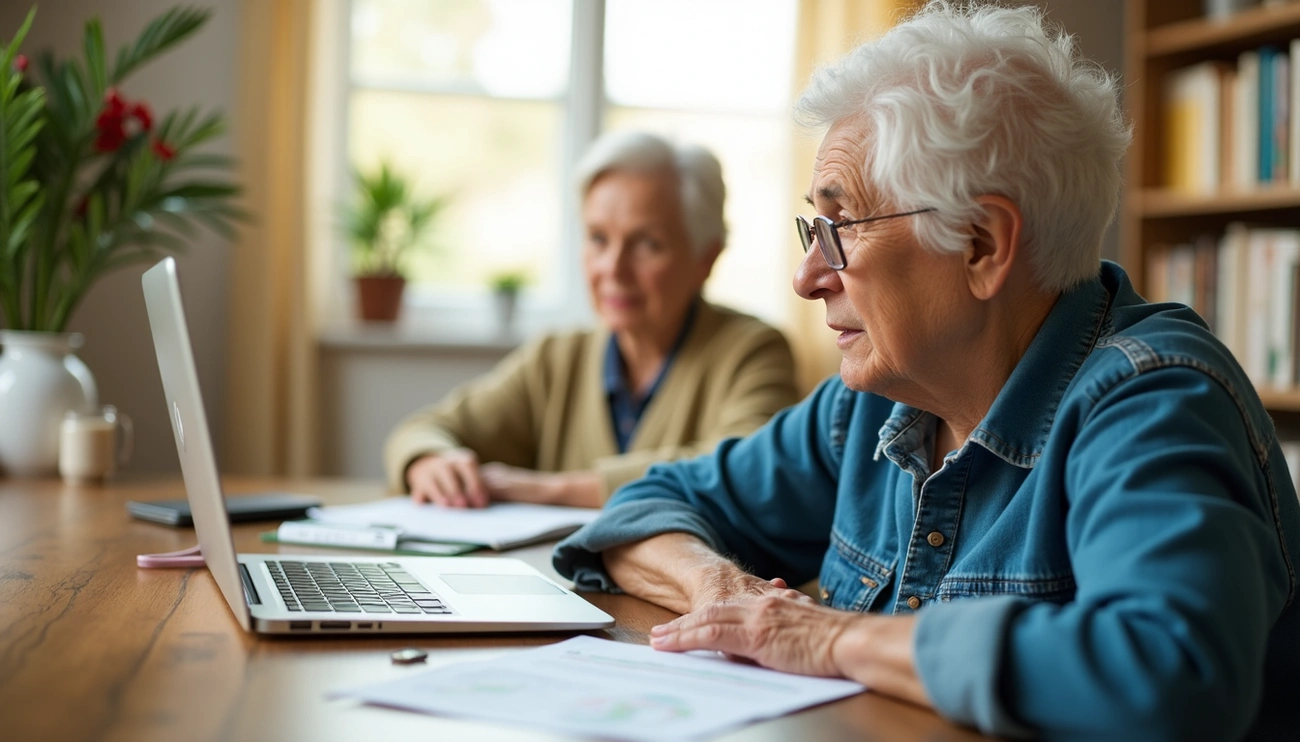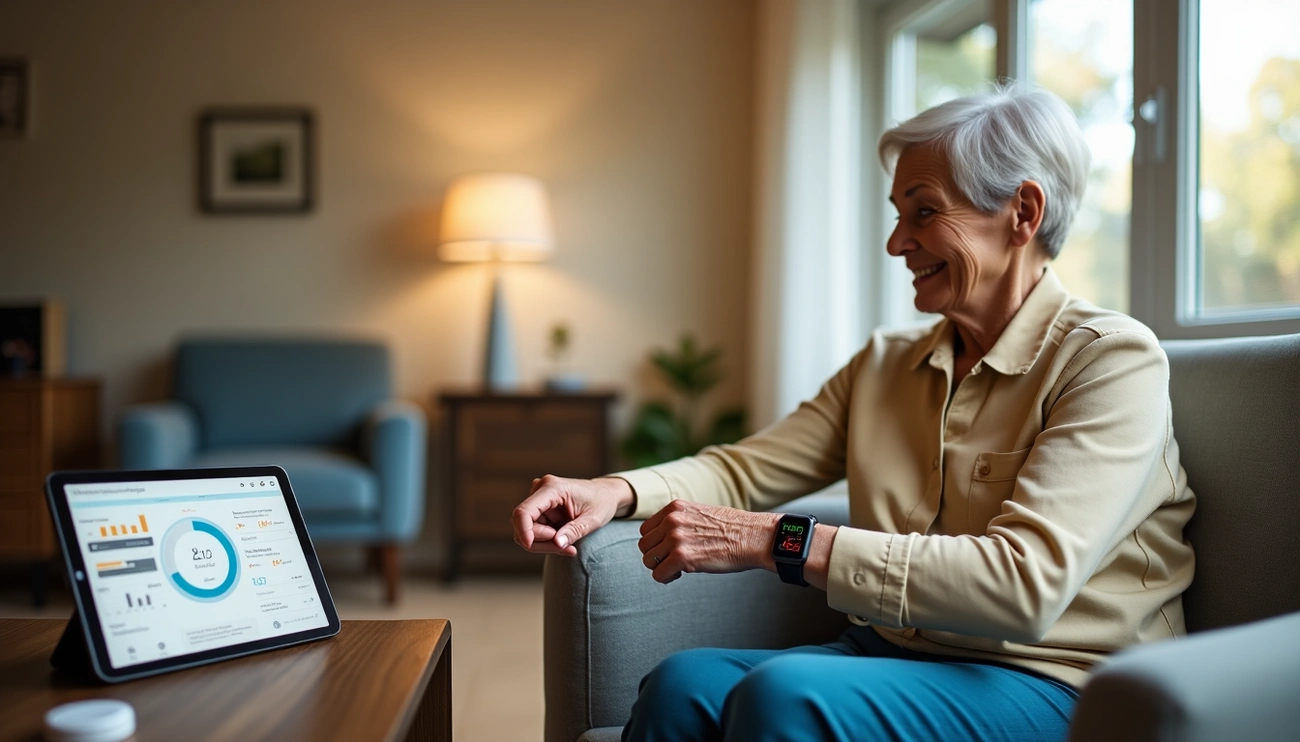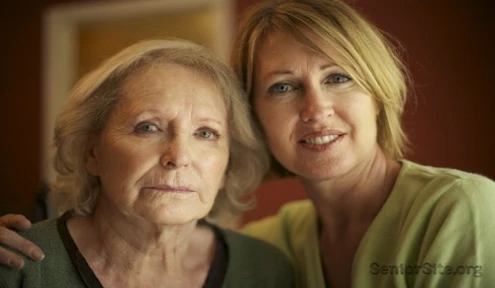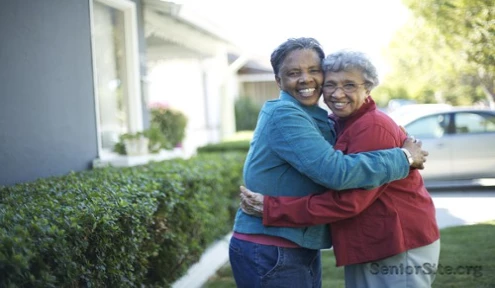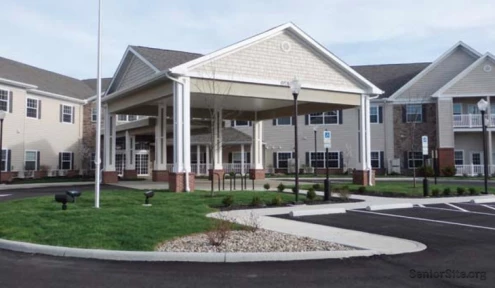Caregivers manage over a dozen essential duties and responsibilities each day, from personal care to medication management.
These individuals handle everything from bathing and grooming to meal preparation and health monitoring. Their role extends far beyond basic assistance, as they’re often the first line of defense in detecting potential health issues and ensuring the overall well-being of those in their care.
Stepping into a caregiver role can feel overwhelming at first. The responsibilities include both routine tasks and complex health monitoring that requires significant attention to detail. Family members taking on caregiving duties and professional caregivers seeking to enhance their skills need to understand the full scope of caregiver duties and responsibilities. This guide examines the essential tasks caregivers perform daily and provides practical examples for providing effective care to loved ones or clients.
Understanding the Role of a Caregiver
Caregiving encompasses a wide range of duties that vary based on the needs of the care recipient. The role extends far beyond basic assistance, with caregivers managing multiple tasks that directly impact the physical, emotional, and social well-being of those receiving care.
What does a caregiver do day-to-day?
Caregivers typically manage numerous essential tasks daily. According to caregiving resources, these responsibilities support all aspects of a care recipient’s wellbeing and quality of life.
Most caregivers handle several core responsibilities:
- Personal care and hygiene – Helping with bathing, grooming, dressing, and toileting
- Meal preparation – Planning nutritious meals, grocery shopping, cooking, and sometimes feeding
- Medication management – Organizing prescriptions, providing reminders, and monitoring for side effects
- Housekeeping – Performing light cleaning, laundry, and maintaining a safe environment
- Transportation – Driving to medical appointments, social events, and running errands
- Emotional support – Providing companionship, conversation, and mental stimulation
Caregivers also serve as health advocates, communicating with healthcare professionals and monitoring changes in condition. Many handle financial matters including bill payments and insurance paperwork.
Types of caregivers: family vs. professional
Caregivers generally fall into two categories: informal caregivers and professional caregivers.
Family caregivers provide care without financial compensation, typically for relatives or close friends. According to AARP, more than 53 million Americans serve as unpaid family caregivers. These individuals often balance caregiving with other responsibilities such as work and child-rearing.
Professional caregivers receive specialized training and compensation for their services. This category includes:
- Certified Nursing Assistants (CNAs) who perform medical-related tasks under supervision
- Home Health Aides (HHAs) who provide personal care in various settings
- Personal Care Attendants (PCAs) who assist with daily activities and companionship
- Hospice caregivers who focus on comfort for end-of-life care
The main difference between family and professional caregivers is often the level of medical training and the capacity to provide specialized healthcare services. Professional caregivers may work through agencies, senior living facilities, or independently.
Common misconceptions about caregiver duties
Despite the prevalence of caregiving, several myths persist about the role and its responsibilities.
One common misconception is that caregivers are primarily for seriously ill individuals. In reality, many healthy seniors receive care simply because they need assistance with certain daily tasks due to mobility limitations or age-related challenges.
Another misbelief is that all caregivers are women. Although women do represent the majority, about 40% of caregivers are men. This number continues to grow as more males take on caregiving roles for parents, spouses, or other family members.
People often assume caregivers work 24/7 without breaks. Most professional caregivers have scheduled shifts and breaks during the day, plus uninterrupted sleep time. Even live-in caregivers aren’t expected to be “on duty” constantly.
Many mistakenly believe that caregiving inevitably leads to burnout and isolation. Though these challenges exist, with proper support systems, self-care practices, and occasional respite care, caregivers can maintain their well-being while providing quality care.
Understanding these realities helps both potential caregivers and those seeking care establish realistic expectations and create sustainable caregiving arrangements.
Starting Out: First Steps in Caregiving
Taking on the role of a caregiver begins with two essential steps: understanding the specific needs of the care recipient and creating a safe environment for them to thrive. These initial steps establish the foundation for effective caregiving and help develop a sustainable routine for both the caregiver and the person receiving care.
Assessing the needs of the person you’re caring for
Thorough evaluation of the care recipient’s situation must precede the daily caregiving duties. This assessment identifies exactly what type of support they require and how to best provide it.
The process starts with gathering comprehensive information about their health status. This includes reviewing medical history, current diagnoses, medications, treatment plans, and specific healthcare provider instructions. Caregivers need written permission to access medical information unless the care recipient is present and able to give consent.
Evaluating functional capabilities follows this initial health review. This specifically focuses on the person’s ability to perform activities of daily living (ADLs) and instrumental activities of daily living (IADLs). The Katz index for basic activities and the Lawton scale for instrumental activities serve as common assessment tools.
Physical assessment remains equally important. Caregivers should look for signs indicating a need for assistance, such as:
- Noticeable weight loss or malnutrition
- Difficulty walking or getting in and out of chairs
- Problems with personal hygiene or wearing soiled clothing
- Forgetfulness about taking medications
- Trouble managing household tasks
Beyond physical needs, mental function needs require careful consideration, including psychological well-being and sleep patterns, as well as social environment and support systems. For older adults with disabilities, these assessments become particularly crucial as they often have complex, integrated needs that can be difficult to identify.
Setting up a safe and functional home environment
Once the needs assessment is complete, creating a safe living space becomes the priority. This doesn’t necessarily require dramatic renovations—often, simple modifications make the biggest difference.
The first step involves evaluating the home for potential hazards. About 65% of older adults’ homes have at least one safety issue, according to reports from their adult children. Addressing these issues means removing tripping hazards like loose rugs, securing electrical cords, and ensuring pathways remain clear.
The bathroom—where most accidents occur—requires special attention. Installing grab bars near the toilet and shower, adding non-slip mats, and considering a shower chair provides added stability. In the bedroom, the bed should be at an appropriate height with nightlights placed strategically to prevent falls during nighttime bathroom trips.
Kitchens need particular modifications for safety. Frequently used items should be rearranged to be within easy reach, and appliances with automatic shut-off features merit consideration. Throughout the home, smoke detectors and carbon monoxide alarms must function properly, with batteries replaced twice yearly.
For navigation and accessibility, all areas should be well-lit, especially hallways, staircases, and entryways. If needed, handrails on stairs and furniture arranged to allow for easy movement improve safety.
The final preparation involves creating an emergency plan, posting important phone numbers in visible locations and keeping a first aid kit readily available. These preparations enable quick responses to potential emergencies while providing peace of mind for everyone involved.
Daily Caregiving Responsibilities Explained
The daily routine of a caregiver revolves around four core responsibilities that form the backbone of quality care. These hands-on tasks require both technical skill and compassionate attention to maintain the dignity and well-being of those receiving care.
Personal hygiene and grooming tasks
Maintaining proper hygiene is fundamental to a care recipient’s health and self-esteem. Caregivers should gather all necessary supplies before bringing the person to the bathroom and ensure the room temperature is comfortable. Privacy remains paramount, requiring caregivers to cover private areas and communicate what they’re doing before touching the person.
For bathing, testing water temperature first and using gentle water pressure helps avoid discomfort, as some individuals are particularly sensitive to moderate pressure. Shower stools padded with towels provide comfort and stability. After bathing, assistance with drying and dressing becomes essential, especially if the person is unsteady.
Nail care requires special attention, particularly for those with diabetes, as even small infections can develop into serious complications. Shared nail-grooming items should be cleaned with alcohol to prevent cross-contamination.
Meal preparation and dietary needs
Nutrition significantly impacts health outcomes, particularly for those with chronic conditions. Meal planning must account for specific dietary restrictions while ensuring adequate nutrients. For seniors, meals should be lower in calories yet higher in essential nutrients.
Malnutrition is a serious concern among older adults and may not be immediately apparent. Warning signs include weight loss, swelling in extremities, decreased appetite, or reduced activity levels. Individuals are at higher risk if they’re 85 or older, take multiple medications, or have conditions like cancer, COPD, or dementia.
Research shows that meal preparation is among the most common caregiving tasks, with 61% of caregivers helping with this responsibility. Preparing larger quantities of hearty meals and portioning them into individual servings that can be frozen for later use simplifies this duty.
Medication reminders and organization
Medication management is critical, as 70% of caregivers report responsibility for their loved one’s medications. This includes filling prescriptions, monitoring adherence, and handling side effects.
Effective organization strategies include:
- Maintaining an updated medication list including non-prescription items
- Using simple pill boxes with compartments for each day
- Establishing medication routines linked to daily activities like breakfast
- Asking the pharmacist to refill long-term medications on the same day
Studies indicate that 40-75% of older adults don’t take medications correctly, and adherence decreases significantly when medications must be taken more than twice daily.
Mobility and transfer assistance
Safe movement techniques protect both the caregiver and care recipient. When transferring someone from bed to wheelchair, the chair should be positioned close to the bed with wheels locked. Caregivers should maintain proper body alignment, with head, neck, and back as straight as possible, while tightening core muscles for support.
The most common injuries for caregivers occur in the back, neck, and shoulders, typically from repetitive lifting motions. Using leg muscles for lifting instead of the back and keeping the person close to the body helps prevent strain.
For unsteady individuals, appropriate walking aids can provide crucial support. A healthcare provider or physical therapist can help select the right cane or walker and ensure it’s properly adjusted for height.
Emotional and Social Support Duties
Beyond physical care, the emotional dimension of caregiving forms a critical part of caregiver duties and responsibilities. Emotional support creates an environment where both mental and physical health can flourish, serving as a core component of daily caregiving activities.
Providing companionship and mental stimulation
Companionship serves as a powerful antidote to loneliness, which many care recipients experience as their world narrows. Regular social interactions provide essential cognitive support, especially for seniors facing memory challenges.
Mental stimulation activities caregivers can incorporate include:
- Engaging in meaningful conversations and reminiscing about past experiences
- Playing brain-stimulating games like cards or board games
- Reading together or discussing current events
- Participating in creative activities like art projects or music
These activities aren’t merely about passing time—they represent purposeful interventions that foster cognitive health. Research indicates that mental stimulation from everyday interactions strengthens the mind in ways often overlooked.
Helping maintain social connections
Social isolation significantly increases a person’s risk of premature death from all causes—a risk that may rival the risks of smoking, obesity, and physical inactivity. Helping care recipients maintain their social connections becomes a vital caregiver responsibility.
Caregivers can facilitate social connections by:
- Arranging visits with family and friends
- Accompanying them to community events and activities
- Helping them navigate video calls or social media platforms
- Connecting them with peer support groups or community resources
These efforts help prevent isolation, which affects more than a third of adults aged 45 and older.
Recognizing signs of emotional distress
Vigilance for signs of emotional distress constitutes an essential caregiver duty. Common warning signs include:
- Feeling overwhelmed, anxious, or constantly worried
- Changes in sleeping or eating patterns
- Withdrawal from previously enjoyed activities
- Unexplained physical symptoms like headaches or stomach problems
When these signs appear, caregivers should validate emotions while providing reassurance. For serious concerns, coordination with healthcare professionals becomes necessary, as emotional health significantly impacts physical wellbeing. Recognizing these signs early allows for timely intervention before minor issues develop into major problems.
Advanced Caregiving and Long-Term Planning
Advanced caregiving extends beyond daily routines as care relationships evolve. This stage requires strategic coordination and professional collaboration to maintain both the care recipient’s health and the caregiver’s wellbeing over the long term.
Coordinating with healthcare professionals
The relationship between caregivers and healthcare providers has shifted from one of authority to partnership. Caregivers serve as essential bridges between care recipients and medical teams, often managing tasks from collecting information to researching treatment options.
Productive medical visits require thorough preparation. Key items to bring include:
- A written list of concerns in priority order
- All medications with dosages
- Insurance information and names of other providers
- A calendar for scheduling follow-up appointments
Hospital admissions demand particular vigilance since patients typically encounter hospitalists rather than their regular doctors. Designating one person as the liaison between doctors and family helps avoid confusion and miscommunication.
Managing medical records and appointments
Organized medical records directly improve health outcomes for care recipients. A study of senior cardiac patients found that those with personal health records experienced better overall health.
Essential records that should remain accessible include:
- Family and personal health histories
- Doctor visit summaries and hospital discharge information
- Pharmacy medication printouts
- Test results and lab work
- Insurance forms and legal documents
Online portals, health record apps, and digital organization systems offer valuable assistance. However, maintaining physical copies as backups remains a prudent practice for all critical documentation.
Planning for respite care and caregiver burnout
Caregiver burnout—a state of physical, emotional, and mental exhaustion—affects many caregivers. Warning signs include feeling overwhelmed, sleeping poorly, weight fluctuations, increased irritability, and missing personal medical appointments.
Planning for respite care before exhaustion sets in proves crucial for sustainability. Options include:
- In-home respite with health aides
- Adult day care centers
- Short-term nursing home stays
Funding sources for respite care vary significantly across programs. Medicare covers respite only under hospice benefits, while Medicaid offers more extensive coverage through home care programs. The VA provides up to 30 days of respite nursing home care annually for veterans.
Advance planning documents like healthcare proxies and living wills become increasingly important as care needs evolve. These preparations ensure the care recipient’s wishes remain respected even if they cannot communicate them directly.
Conclusion
Caregiving encompasses far more responsibilities than most people realize. Successful caregiving requires a delicate balance of physical care, emotional support, and strategic planning.
The role demands attention to countless details – from ensuring medication compliance to maintaining social connections. Caregivers must stay alert to changes in the care recipient’s condition while simultaneously managing their own well-being to avoid burnout.
Quality care starts with thorough assessment and proper preparation. Setting up safe environments, establishing daily routines, and coordinating with healthcare professionals creates sustainable caregiving arrangements. Taking time for self-care and seeking support when needed ensures both caregiver and care recipient thrive in their journey together.
FAQs
Q1. What are the primary responsibilities of a caregiver? Caregivers have a wide range of duties, including assisting with personal hygiene, meal preparation, medication management, housekeeping, transportation, and providing emotional support. They also often serve as health advocates, communicating with healthcare professionals and monitoring changes in the care recipient’s condition.
Q2. How do family caregivers differ from professional caregivers? Family caregivers typically provide unpaid care for relatives or close friends, often balancing caregiving with other responsibilities. Professional caregivers, on the other hand, receive specialized training and compensation for their services. They may work through agencies, senior living facilities, or independently, and often have more medical training to provide specialized healthcare services.
Q3. What steps should I take when starting out as a caregiver? Begin by thoroughly assessing the needs of the person you’re caring for, including their health status, functional capabilities, and social environment. Next, focus on creating a safe and functional home environment by addressing potential hazards, installing safety features, and ensuring accessibility throughout the living space.
Q4. How can caregivers provide emotional support to care recipients? Caregivers can offer emotional support by providing companionship, engaging in mentally stimulating activities, helping maintain social connections, and being vigilant for signs of emotional distress. Regular social interactions and purposeful activities can significantly improve the care recipient’s mental and emotional well-being.
Q5. What strategies can caregivers use to prevent burnout? To prevent burnout, caregivers should plan for respite care before exhaustion sets in. Options include in-home respite with health aides, adult day care centers, or short-term nursing home stays. It’s also crucial to maintain personal health, recognize warning signs of burnout, and seek support when needed. Coordinating with healthcare professionals and managing medical records efficiently can also help reduce stress.


